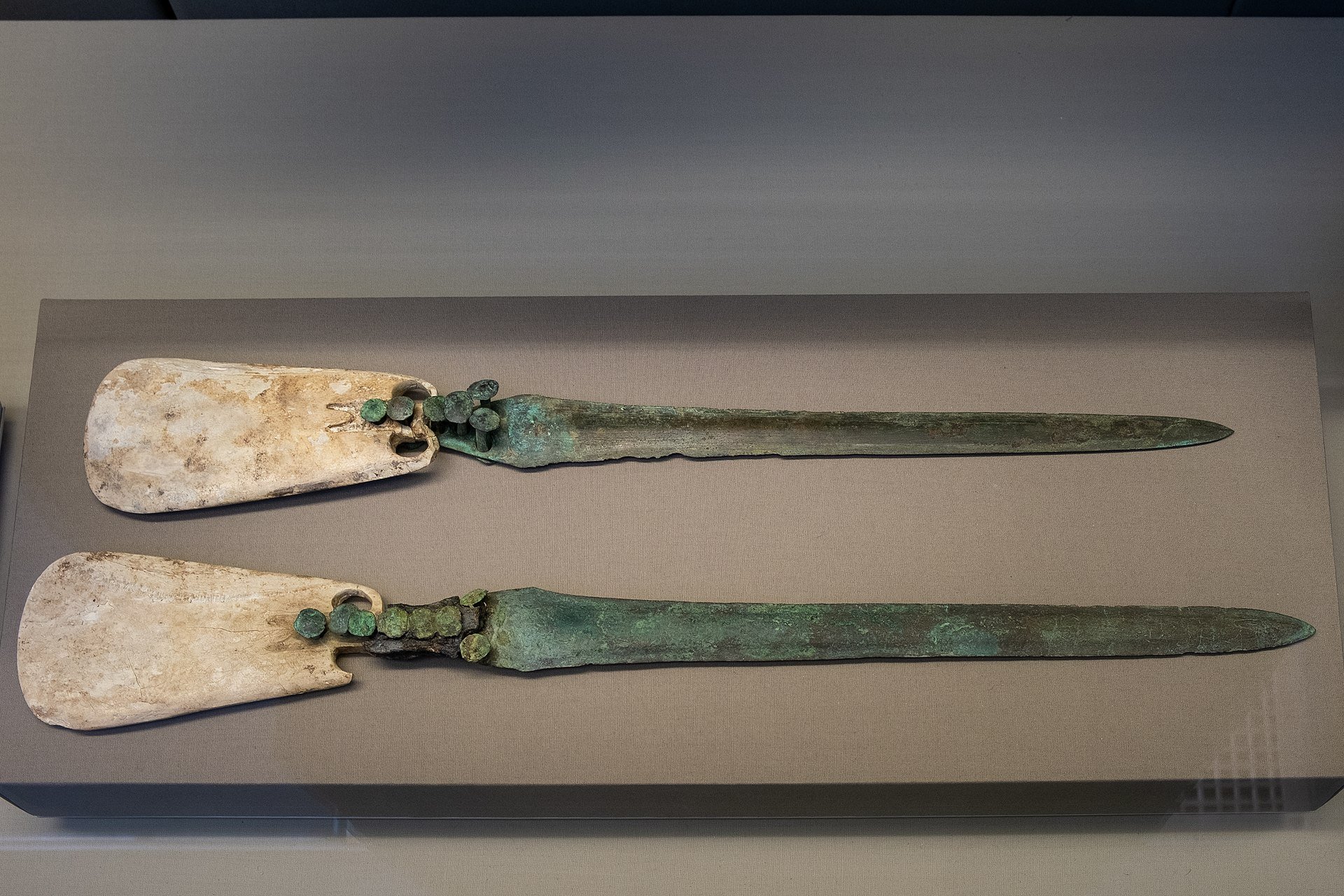Kerma was located in present-day Sudan at least 5500 years ago. It is one of the largest archaeological sites in ancient Nubia. Around 3000 BC, a peculiar culture began around Kerma. It was a large urban center that was built around a large adobe temple known as the Western Deffufa.
Model of the city of Kerma c. 2000 BC, National Museum of Sudan
By 1700 BC, Kerma had a population of at least 10,000 people. Different to those of ancient Egypt in theme and composition, Kerma's artefacts are characterized by extensive amounts of blue faience, which the Kermans developed techniques to work with independently of Egypt, and by their work with glazed quartzite and architectural inlays.
The ceremonial palace A, © B.-N. Chagny. Swiss-French-Sudanese mission of Kerma-Doukki Gel
Influence from Egypt may be observed in numerous burials, especially with regards to material evidence such as pottery and grave goods. Kerma contains a cemetery with over 30,000 graves. The cemetery shows a general pattern of larger graves ringed by smaller ones, suggesting social stratification. The site includes at its southern boundary burial mounds, with four extending upwards of 90 metres (300 feet) in diameter. These are believed to be the graves of the city's final kings, some of which contain motifs and artwork reflecting Egyptian deities such as Horus. Artifacts such as scarab seals and amulets are prolific, indicating extensive trade with ancient Egypt as well as an exchange of cultural ideas. After the sacking of Kerma, the cemetery was used to host the kings of the 25th or "Napatan" dynasty of the Kingdom of Kush from Upper (Southern) Nubia.
Tumulus from Kerma c. 2450 BC, National Museum of Sudan
The Kerma culture or Kerma kingdom was the early civilization centered in Kerma. It flourished from around 2500 BC to 1500 BC. The Kerma culture was based in the southern part of Nubia, or "Upper Nubia", and later extended its reach northward into Lower Nubia and the border of Egypt. The polity seems to have been one of a number of Nile Valley states during the Middle Kingdom of Egypt. In the Kingdom of Kerma's latest phase, lasting from about 1700–1500 BC, it absorbed the Sudanese kingdom of Sai and became a sizable, populous empire rivaling Egypt. Around 1500 BC, it was absorbed into the New Kingdom of Egypt, but rebellions continued for centuries. By the eleventh century BC, the more-Egyptianized Kingdom of Kush emerged, possibly from Kerma, and regained the region's independence from Egypt.
The linguistic affiliation of the Kerma culture is currently unknown, and membership to both the Nilo-Saharan and Afro-Asiatic language families has been proposed.
Daggers of bone and copper, 1750-1450 BC, Kerma, British Museum
Kerma was evidently a sizable political entity - Egyptian records speak of its rich and populous agricultural regions. Unlike Egypt, Kerma seems to have been highly centralized. It controlled the 1st to 4th Cataracts, which meant its domain was as extensive as ancient Egypt.
The Western Deffufa
Numerous village communities scattered alongside fields of crops made up the bulk of the realm, but there also seems to have been districts where pastoralism (goat, sheep and cattle) and gold processing were important industries. Certain Kerma towns served to centralize agricultural products and direct trade. Analysis of the skulls of thousands of cattle interred in royal Kerma tombs suggest that stock were sometimes brought vast distances, from far districts, presumably as a type of tribute from rural communities on the death of Kerma's monarchs. This parallels the importance of cattle as royal property in other parts of Africa at later times.
Only the centres of Kerma and Sai island seem to have had contained sizable urban populations.












